Whether you fill up your gas tank just once a month or several times a week, safety should be top of mind when you're at the gas pump. While static electricity-related incidents at the gas pump are uncommon, there are some things you can do to stay safe when filling up. Here are 10 things to keep in mind when pumping gas.
10 Things You Should Never Do While Pumping Gas
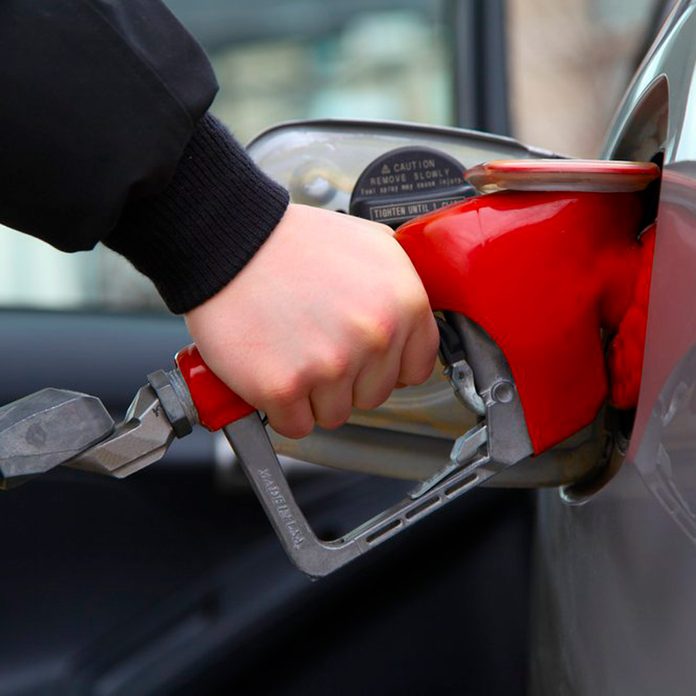
Don’t Leave the Engine Running
Make sure you put your vehicle in park and turn the engine off before pumping gas. You should also switch off any auxiliary 12-volt power sources such as phone chargers and cigarette lighters because, while rare, they can be a potential igniter of a fuel fire.
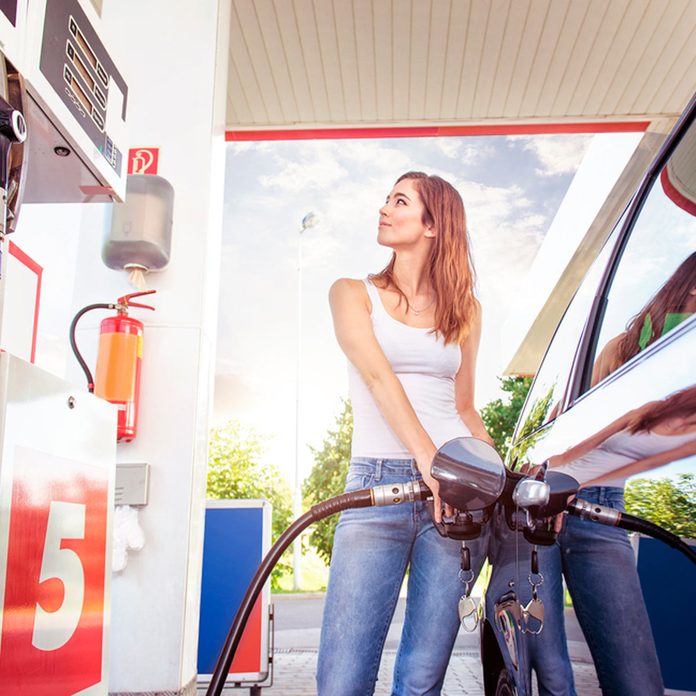
Don’t Get Back in Your Vehicle
Don’t get back in your vehicle when re-fueling. A small amount of static electricity can build up and cause a spark when you touch the metal, which could be dangerous when mixed with gasoline vapors. Here’s how to protect your engine with additives.
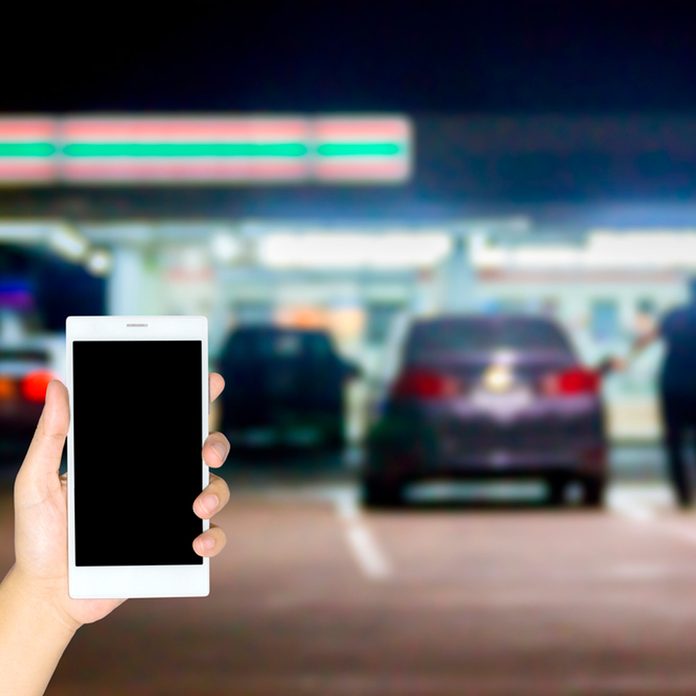
Don’t Use Your Cellphone
Gas stations are busy places. While you probably won’t cause an electrical spark when using your cellphone around a gas tank, you should avoid using your phone so you stay more alert and focused on what you are doing. This is why you shouldn’t charge your phone in your car.
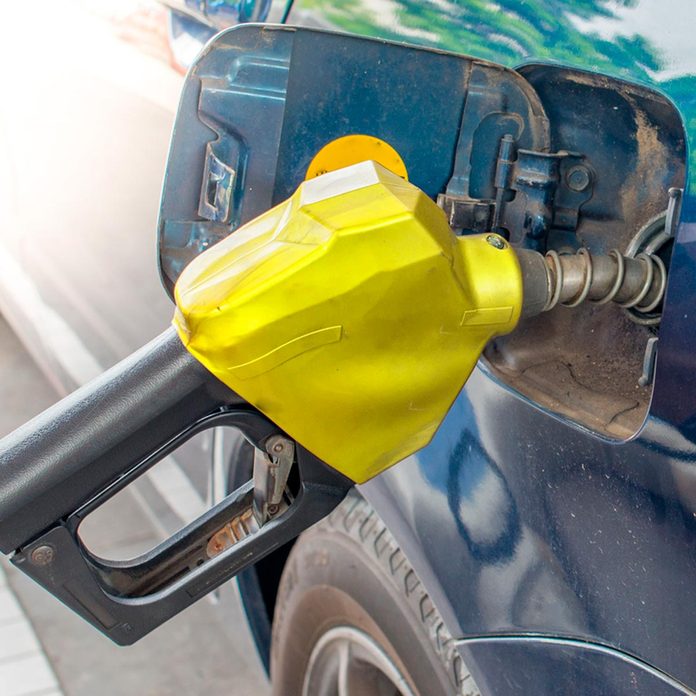
Don’t Overfill
Stay alert and be sure not to overfill your gas tank. Most fuel tanks shut off automatically when the tank is full, so trust the tank so you don’t end up spilling gasoline everywhere. Here’s how to lubricate your car locks, hinges and latches in just 10 minutes.
“Folks think they’re getting more miles out of it, but overfilling is plugging up the vapor recovery system, destroying your vehicle’s emissions control,” says Alex Black of EpicVIN.
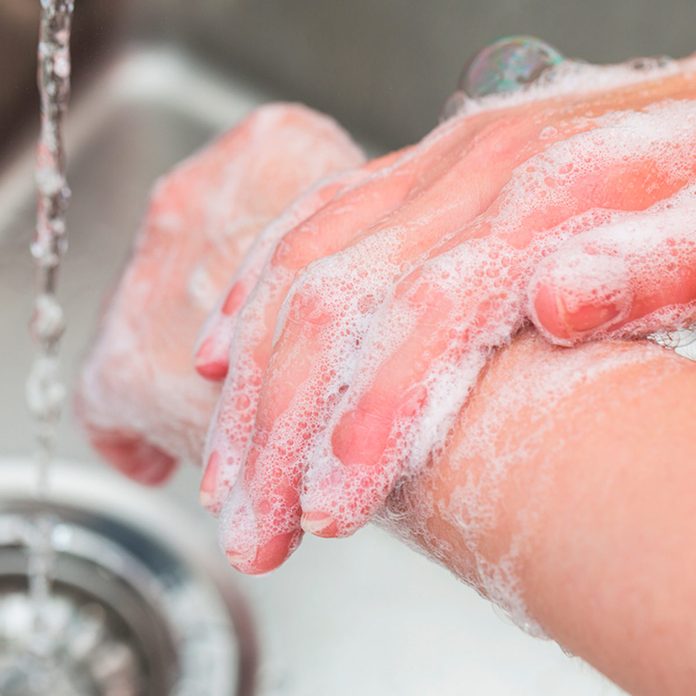
Keep Gas Off Skin, Eyes
If you do get gasoline on your skin, wash the affected area in lukewarm water and soap. If you get gas in your eyes, according to the Mayo Clinic, you should flush them with tap water for at least 15 minutes and remove contact lenses. Avoid rubbing your eyes.
Did you know that these 10 household items are extremely flammable?

Keep Children in the Car
While you should stay outside the vehicle when pumping gas, children should be left inside the car. Not only will this help them stay away from toxic fumes, but it will help you keep your attention focused on what you’re doing.
Of course, never leave children alone in the car if you have to walk away from the pump.
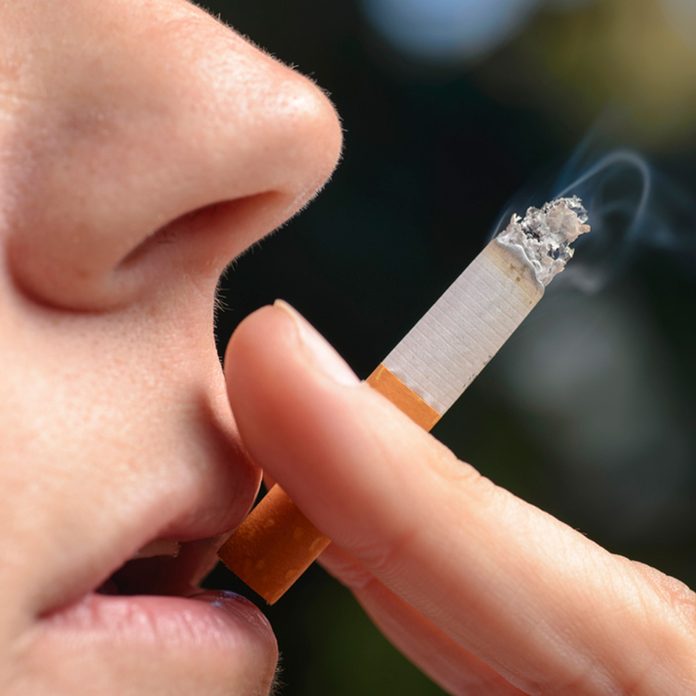
Don’t Smoke
Never smoke around the gas pump. And this should be obvious, but never ignite lighters or light matches anywhere near a gas pump.
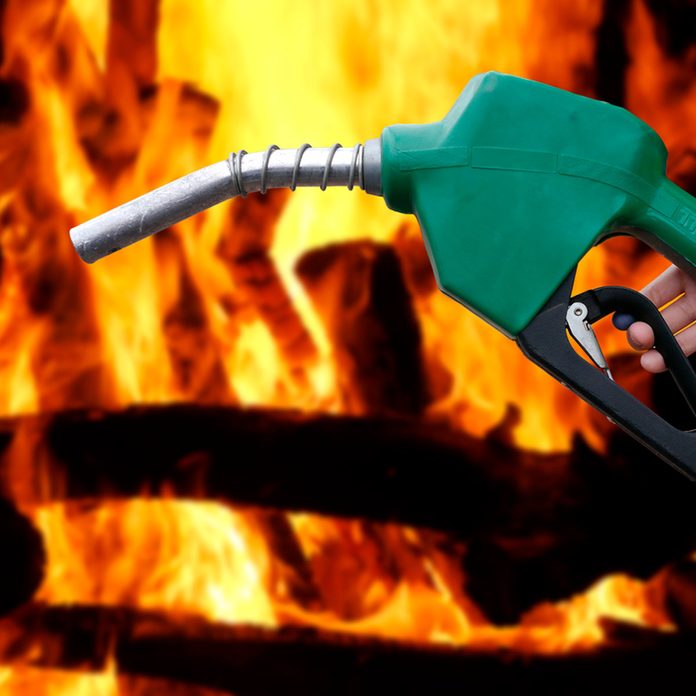
In Case of Fire
If you do experience a fire when refueling, back away from the vehicle. Leave the nozzle in place and notify a gas station employee right away.
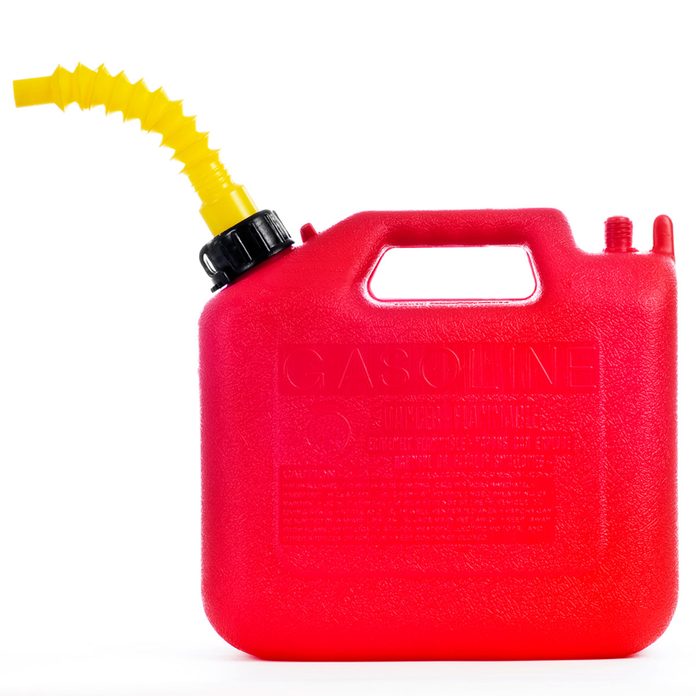
Use the Right Container
If you are filling a container with gas, make sure it is an approved portable container. Leave it on the ground when filling and then place it in the vehicle. Make sure the cap is tightly closed and remove the container from your car as soon as you reach your destination. Learn why stale gas could be killing your small engine.
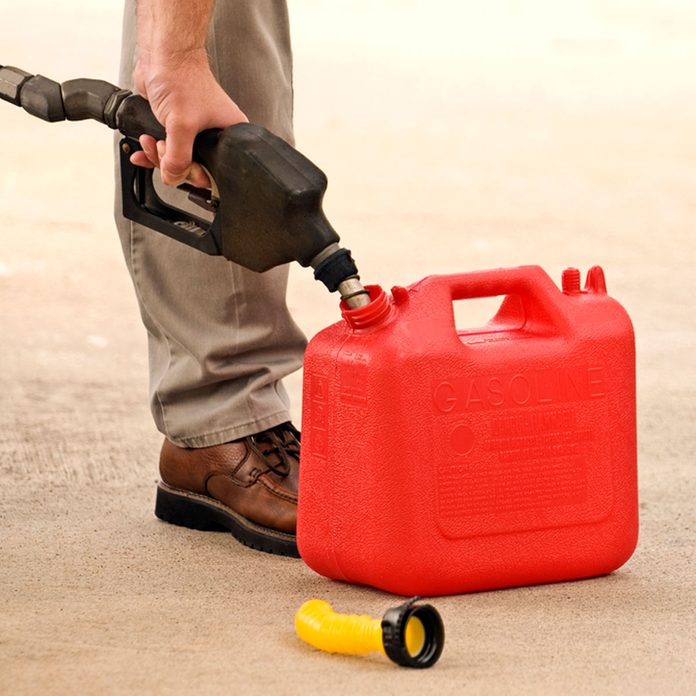
Transport Gas Safely
If you are transporting gasoline in a portable container, make sure it is secure in the vehicle so it doesn’t tip over and spill. You should also never leave gasoline in sunlight or in the trunk of a vehicle. This is the correct way to store gasoline.
FAQ
What should I do if I spill gasoline?
If you spill less than two or three ounces on the ground, there is no need to worry about it. “It will evaporate before you can get it cleaned up,” says Pyle. “If more has been spilled, inform the cashier, who will use quick dry absorbent to clean up the mess.”
If you spill gasoline on your skin, promptly wash it with soap and water to prevent irritation. If it’s on your clothes, you’ll probably need to wash them multiple times to get it out. Do not put them in a hot dryer if they still smell like gas, as the dryer could ignite the gas fumes.
If gasoline gets on your car, wash it off with soap and water, then apply wax, since the gas probably removed that from the paint surface.
“If it is in your car, roll down your windows and let it ventilate,” says Black. “Driving with gasoline fumes is more than annoying, it is hazardous.”
What are skimming devices and how do I spot them?
Skimming devices are small electronic components that thieves place on the credit card readers of gasoline pumps. They are not easy to detect, but there are ways to protect yourself from them. Pyle and Black recommend:
- Using a tap-to-pay credit card, as those cannot be hacked by skimmers;
- Avoid using debit cards, as skimmers can record PINs;
- Avoid card readers that look loose, misaligned or dissimilar from others in the station.
- Check for tamper seals. “Security tape is often placed over the panel by many stations,” says Black. “If it is broken, use another pump.”
- Regularly check your credit card or bank account for fraud, so you can promptly cancel a skimmed card and get your funds returned.
About the Experts
Alex Black is chief marketing officer at EpicVIN. He has been car expert for more than 15 years, working at car auctions, vehicle history providers and more.
Chris “Moose” Pyle is a master-certified technician with 20-plus years of automotive experience. He has also worked as an expert for JustAnswer since 2006.




















